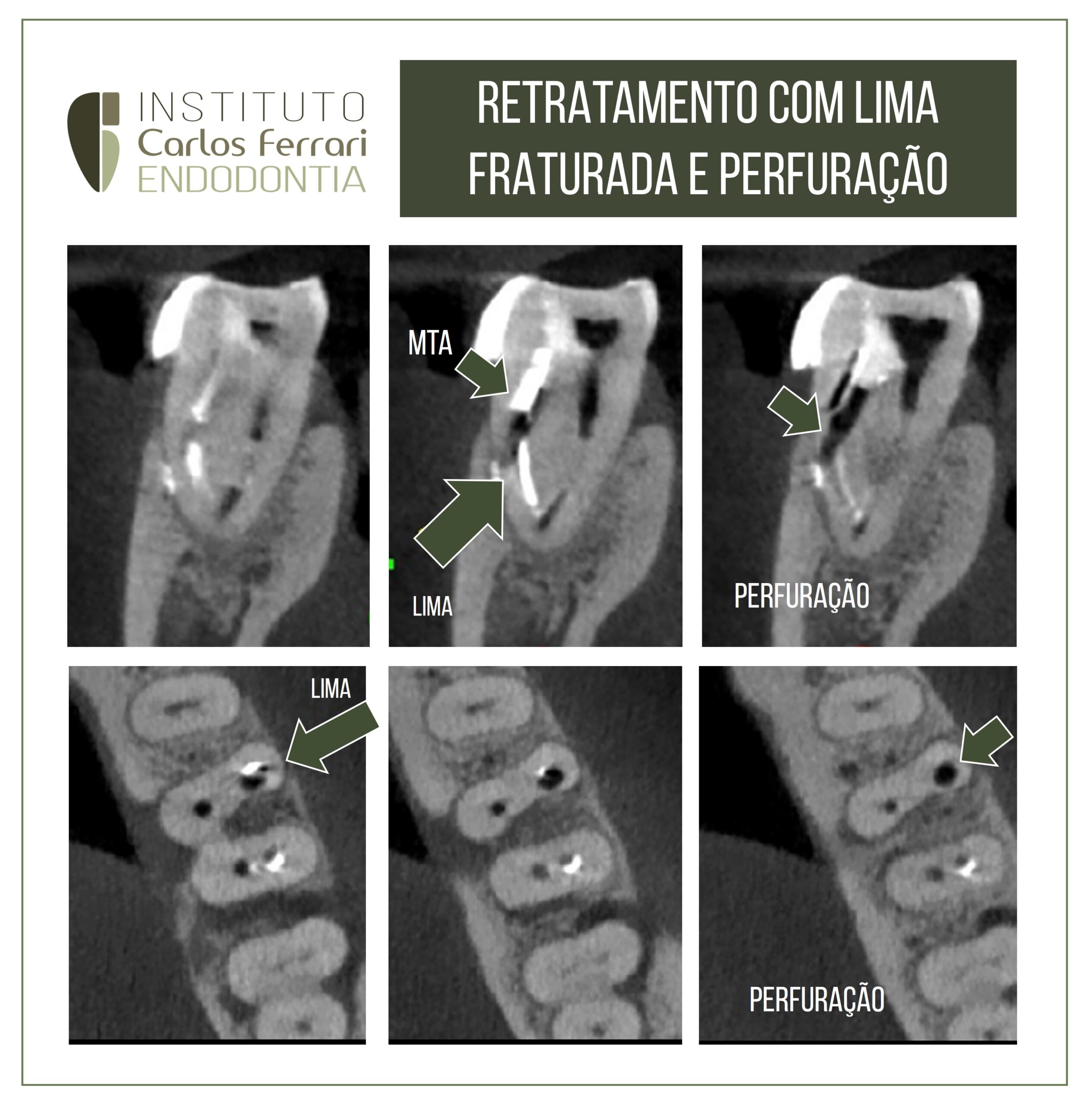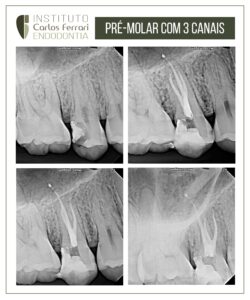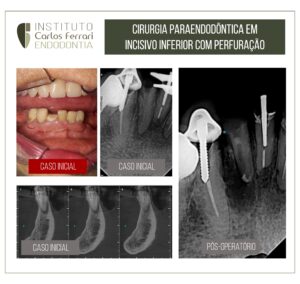Fractured file and perforation. Case of endodontic reintervention made difficult by the presence of a fractured file and adjacent perforation, in which a more conservative approach was chosen due to the damage already present.
The patient was referred by a colleague after a file fracture in the buccal mesial canal, followed by perforation with a rotary instrument in an attempt to remove it and placement of MTA for closure. There were no signs or symptoms. The CT scan revealed an extensive perforation adjacent to the fractured instrument, which would have made it difficult to remove the instrument. It was also observed that the mesial canals converged in a single foramen, which made the prognosis slightly more favorable.
The MTA was then removed from the crown, the ML and D canals were uncovered and the perforation decontaminated and medicated with Bio C Temp for 30 days. At the second appointment, the canals were filled and the perforation closed with Bio C Repair.
The patient was instructed on the maintenance of the fractured instrument and the need for follow-up.
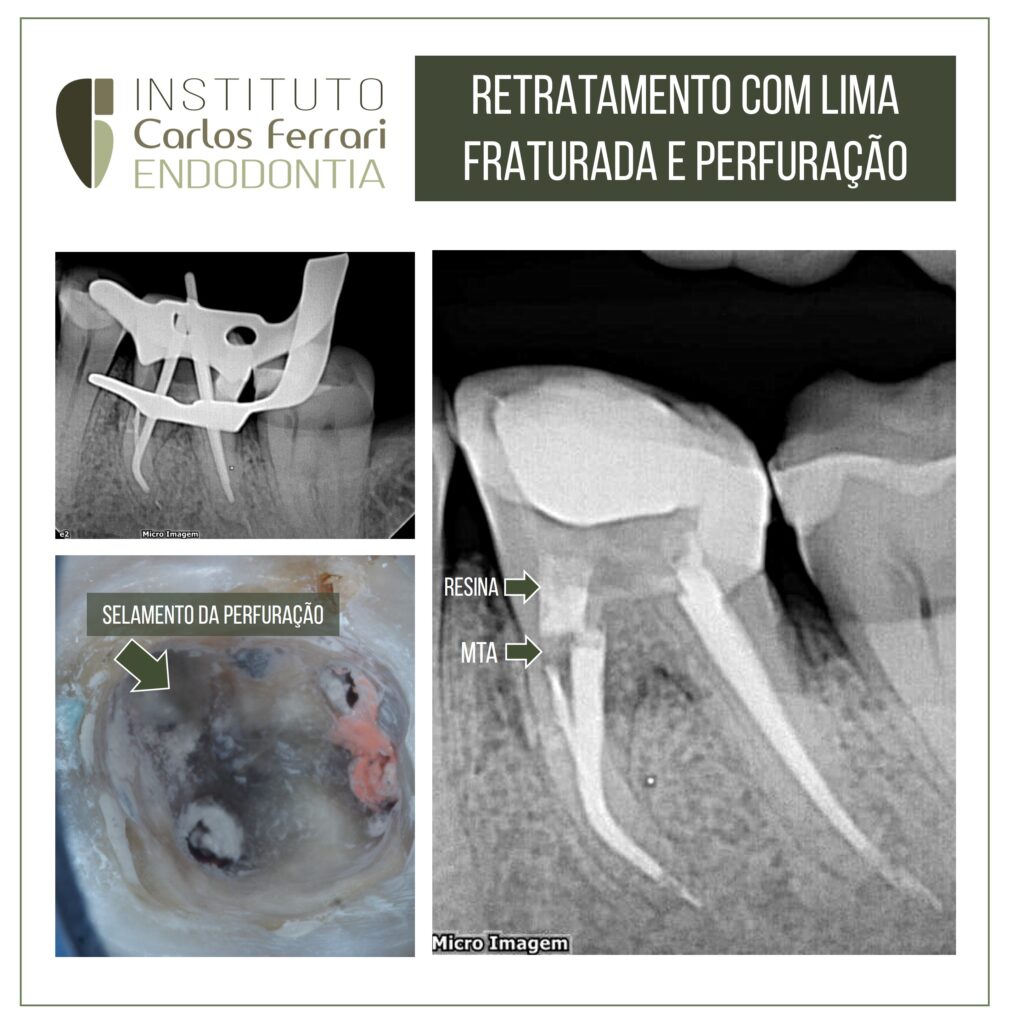
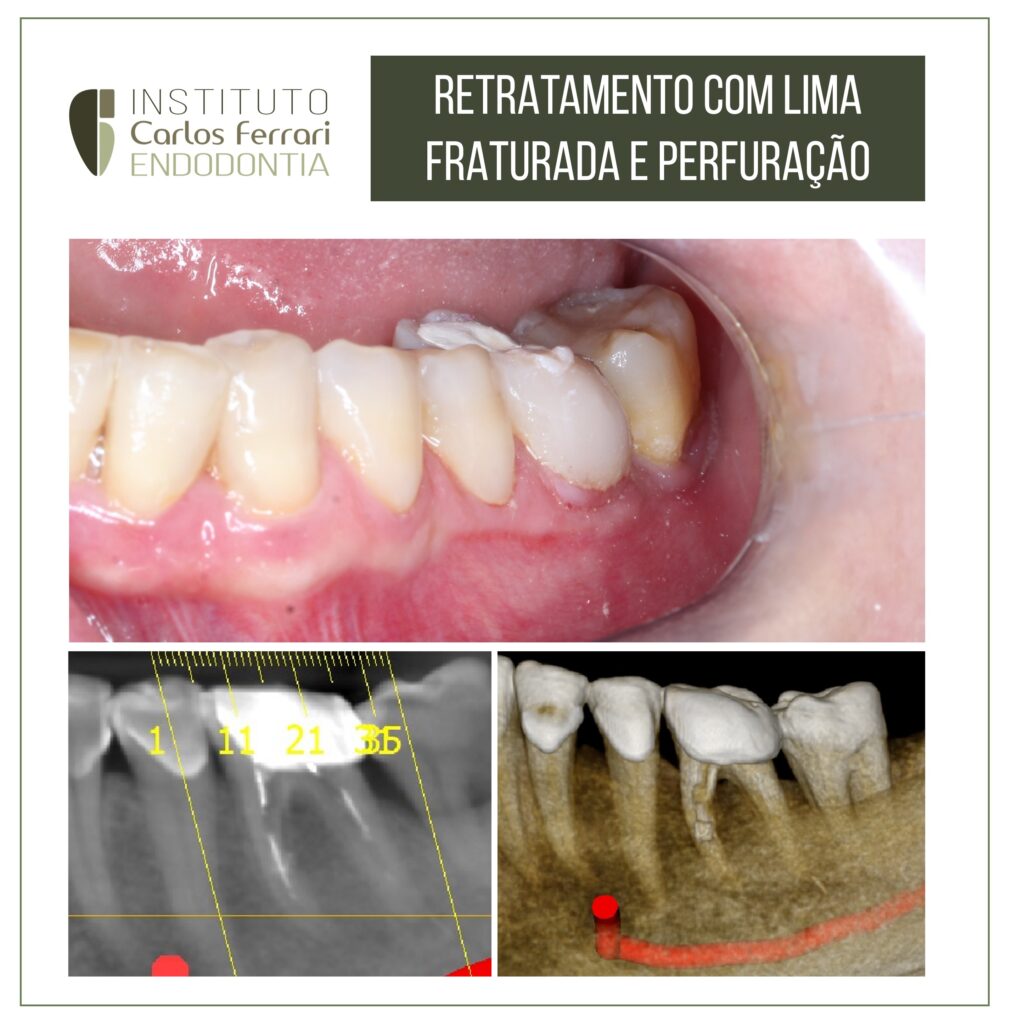
In:
Endodontic retreatment and perforation treatment
root with MTA-based cements.
Nayara Rodrigues Nascimento Oliveira Tavares, Jéssica Monteiro Mendes, Alexia da Mata
Galvão, Maria Antonieta Veloso Carvalho de Oliveira. Angelus.
Introduction
Perforation is an artificial communication between the
root canal system and the supporting tissues of the
teeth, which complicates treatment and deprives the prognosis
if not properly treated. Root
perforations can occur pathologically as a result
of resorption and caries or iatrogenically during
some stage of root canal treatment (Kakani
et al 2015).
MTA consists of fine hydrophilic particles
of tricalcium silicate, tricalcium aluminate, tricalcium
oxide, silicate oxide, calcium
sulfate dihydrate, tetracalcium aluminate and small amounts
of mineral oxides (bismuth oxide). Its composition
comes from Portland cement, and it has been
studied for about 20 years, since it was officially
approved in 1998 (Kakani et al 2015; Tawil et al 2015).
Perforations are usually the result of
iatrogenic conduct in which a communication
occurs between the root canal and the periradicular tissue during
coronal access or during instrumentation.
perforations can also occur in cases of
internal resorption, where the entire thickness of the root is
affected by the resorption process. Due to the excellent
sealing capacity and biocompatibility of MTA,
it has been used to repair root perforations with
predictable and favorable results (Tawil et al 2015).
The new MTA formulations exhibit a reduced setting
time, are sold in containers that
allow for more controlled distribution and have
the same required properties (Tawil et al 2015).
Initial studies with MTA reported a
success rate of 56% over 41 months. In a
more recent in vivo study using MTA as a
sealing material, over 85% achieved a
perforation repair. MTA provides an effective long-term
perforation seal with extremely biocompatible
material (Mente et al. 2010; Buttel
et al 2013; Mente et al 2014).
Thus, although there is still no
material with all the ideal characteristics, in the
treatment of perforations MTA is the
most favorable material, with adequate sealing in the
long term, and is therefore still the first choice in these
cases. The aim of this article was to report a clinical case
of retreatment and the presence of a perforation, using
MTA-based cements.
Fractured lime and perforation.


